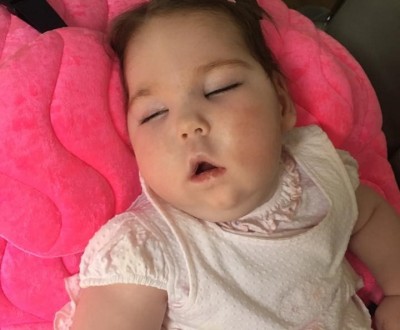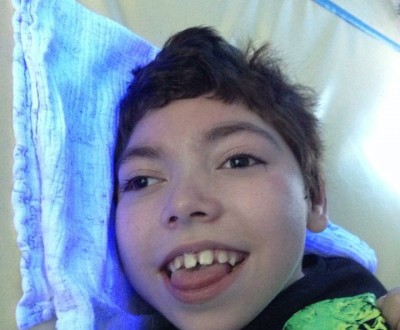Your Training Needs Taken Care Of
PSP provides a wide range of training programmes for health, social care, and educational professionals; also family carers. They are tested and accredited and give the participant certification and proof of their competence. We offer a bespoke service and can tailor the subject of the course to meet your needs, please contact one of our friendly specialists to find out more.
We support carers and professionals to deliver the very best – raising their skill set and improving the level of care they provide.
At the heart of our training is our aim to provide you with exactly what you need in order to provide the best possible care.
All courses can be delivered on your own premises or in a home setting. Predominantly we offer service in the North West of England but can offer a flexed service in other areas.
Who Are The Trainers?
Our Nurse Educators are knowledgeable, committed and enthusiastic. They offer a flexible approach to developing and delivering training to meet individual or organisational needs.
The team are all highly respected in their fields of specialism. All practice within NHS Trusts as well as the independent sector.
Our team has an excellent reputation of delivering informative, quality courses that meet the needs of the delegates and the organisations they work for.
Our Nurse Educators are experts in making complex information accessible and understandable. Our training sessions are informative and enjoyable, meaning participants will leave feeling confident and about applying what they have learnt within their daily work.
Cost
Costs will vary depending on venue and number of delegates. Please get in touch with our team for a no obligation quote for the course you require.
Please scroll down for topic we already cover but remember always ask if there is a missing subject for you; we still may be able to help.
Contact Us
Get in touch with one of our friendly specialists today to discuss your training requirements.
-
Respiratory Management
Respiratory Management
Training Aim:
The training will provide a step-by-step guide for respiratory management within the community/home setting.
Training Objectives:
At the end of the course, participants will be able to:-
• Demonstrate knowledge of the respiratory system and its functions
• Perform a respiratory assessment primary and secondary
• Demonstrate safe and effective chest percussion
• Understand the role of support staff and health professionals
• Have an awareness of the importance of record keeping
• Have an understanding of the actions in the event of an incident. -
Oral Suction
Oral Suction
Training Aim:
The training will provide a step-by-step guide for safe and effective oral suctioning within the community/home setting.
Training Objectives:
At the end of the course, participants will be able to:-
• Demonstrate an understanding of the importance of oral suction
• Examine the risk/complications of oral suction
• Undertake a basic assessment of the need for oral suction
• Prepare the patient, environment and equipment for a suction procedure
• Complete the task of suction safely
• Conclude and evaluate the care episode
• Understand the role of support staff and health professionals
• Have an awareness of the importance of record keeping
• Have an understanding of the actions in the event of an incident. -
The Use and Care of a Nebulizer
The Use and Care of a Nebulizer
Training Aim:
The training will provide a step-by-step guide for safe and effective use and care of a nebulizer within the community/home setting.
Training Objectives:
At the end of the course, participants will be able to:-
• Assess a patient
• Provide a review of the medical prescription
• Assemble the nebuliser – (as medical representative demonstrated)
• Understand administration techniques
• Understand the importance of hand and other hygiene factors
• Be able to verify clinical/prescriptive medication
• Review equipment
• Understand the correct positioning of patients
• Assess vital signs
• Understand the emergency procedure
• Understand the contraindications of treatment
• Understand the role of support staff and health professionals
• Have an awareness of the importance of record keeping
• Have an understanding of the actions in the event of an incident. -
Oxygen Therapy and Saturation Monitoring
Oxygen Therapy and Saturation Monitoring
Training Aim:
The training will provide a step-by-step guide for oxygen therapy and saturation monitoring within the community/home setting.
Training Objectives:
At the end of the course, participants will be able to: –
• Demonstrate knowledge of the respiratory system and its functions
• Perform a respiratory assessment primary and secondar.
• Demonstrate safe and effective use of oxygen
• Be able to monitor saturations adequately
• Understand the role of support staff and health professionals
• Have an awareness of the importance of record keeping
• Have an understanding of the actions in the event of an incident. -
Long Term Ventilation in the Community
Long Term Ventilation in the Community
Training Aim:
The training will provide a step-by-step guide for safe and effective long term ventilation
within the community/home setting.Training Objectives:
At the end of the course, participants will be able to: –
• Demonstrate an understanding of a portable ventilator and the function of all keys
• Understand and trouble shoot any issues with the portable ventilator
• Understand the different modes that can be used by the portable ventilator
• Understand the role of support staff and health professionals
• Have an awareness of the importance of record keeping
• Have an understanding of the actions in the event of an incident. -
Management and Use of an Ambu Bag
Management and use of an Ambu Bag
Training Aim:
The training will provide a step-by-step guide for the administration of breaths using an ambu bag within the community/home setting.
Training Objectives:
At the end of the course, participants will be able to: –
• Demonstrate knowledge of the respiratory system and its functions
• Perform a respiratory assessment primary and secondary
• Demonstrate safe and effective Ambu Bag technique
• Understand the role of support staff and health professionals
• Have an awareness of the importance of record keeping
• Have an understanding of the actions in the event of an incident. -
Tracheostomy Care in the Community - Paediatrics
Tracheostomy Care in the Community – Paediatrics
Training Aim:
The training will provide a step-by-step guide for safe and effective tracheostomy care (paediatrics) within the community/home setting.
Training Objectives:
At the end of the course, participants will be able to:-
- State the implications of a tracheostomy
- Describe the difference between a surgical, percutaneous and mini tracheostomy
- Recognise the complications that tracheostomies pose
- Demonstrate knowledge of cuff pressures and care
- Understand the weaning process
- Be able to perform suctioning
- Deal with emergencies
- Communicate effectively with the patient
- Understand the role of support staff and health professionals
- Have an awareness of the importance of record keeping
- Have an understanding of the actions in the event of an incident.
-
Tracheostomy Care in the Community – Adults
Tracheostomy Care in the Community – Adults
Training Aim:
The training will provide a step-by-step guide for safe and effective tracheostomy care (adults) within the community/home setting.
Training Objectives:
At the end of the course, participants will be able to:-
- State the implications of a tracheostomy
- Describe the difference between a surgical, percutaneous and mini tracheostomy
- Recognise the complications that tracheostomies pose
- Demonstrate knowledge of cuff pressures and care
- Understand the weaning process
- Be able to perform suctioning
- Deal with emergencies
- Communicate effectively with the patient
- Understand the role of support staff and health professionals
- Have an awareness of the importance of record keeping
- Have an understanding of the actions in the event of an incident.
-
Gastrostomy Care in the Community
Gastrostomy Care in the Community
Training Aim:
The training will provide a step-by-step guide for safe and effective gastrostomy care
within the community/home setting.Training Objectives:
At the end of the course, participants will be able to:-
• Understand what a gastrostomy is and why it is there
• Examine the different types of gastostromy
• Understand the role of support staff and health professionals
• Have an awareness of the importance of record keeping
• Have an understanding of the actions in the event of an incidentSupport a person with a Gastostromy:
• Understand the reasons a person has a gastostromy and how to support them
• Recognise infection signs and undertake and follow hygiene and infection control measures
• Recognise how and when to seek medical assistance. -
Colostomy/Ileostomy Care
Colostomy/Ileostomy Care
Training Aim:
The training will provide a step-by-step guide for safe and effective colostomy/ileostomy
within the community/home setting.Training Objectives:
At the end of the course, participants will be able to:-
• Understand what a colostomy/ileostomy is and why it is there
• Examine the different types of colostomy/ileostomy
• Understand the role of support staff and health professionals
• Have an awareness of the importance of record keeping
• Have an understanding of the actions in the event of an incident.Support a person with a Colostomy/Ileostomy
• Understand the reasons a person has a colostomy/ileostomy and how to support them
• Recognise infection signs and undertake and follow hygiene and infection control measures
• Recognise how and when to seek medical assistance. -
Management of Nasogastric Feeding Tubes – Insertion and Care
Management of Nasogastric Feeding Tubes – Insertion and Care
Training Aim:
The training will provide a step-by-step guide for nasogastric intubation within the community/home setting.
Training Objectives:
At the end of the course, participants will be able to: –
• Demonstrate knowledge of nasogastric intubation and why it is used
• Demonstrate skill and dexterity around nasogastric intubation
• Prepare the patient, environment and equipment
• Understand the role of support staff and health professionals
• Have an awareness of the importance of record keeping
• Have an understanding of the actions in the event of an incident. -
Management of TIVAD (Totally Implantable Venous Access Device)
Management of TIVAD (Totally Implantable Venous Access Device)
Portacath Gripper Needle Training
Training Aim:
The training will provide a step-by-step guide for TIVAD training within the community/home setting.
Training Objectives:
At the end of the course, participants will be able to: –
• Demonstrate knowledge of TIVAD and why they are required
• Demonstrate the skill and dexterity around the insertion of a gripper needle and the administration of IV medication
• Understand the role of support staff and health professionals
• Have an awareness of the importance of record keeping
• Have an understanding of the actions in the event of an incident. -
Naso-jejunal and Jejunostomy Management
Naso-jejunal and Jejunostomy Management
Training Aim:
The training will provide a step-by-step guide for naso-jejunal and jejunostomy management within the community/home setting.
Training Objectives:
At the end of the course, participants will be able to:-
Stoma Care – jejunostomy
• Understand what a stoma is and why it is there
• Examine the different types of stoma
• Understand the role of support staff and health professionals
• Have an awareness of the importance of record keeping
• Have an understanding of the actions in the event of an incident.Support a person with a jejunostomy:
• Understand the reasons a person has a jejunostomy and how to support them (including feeding/medication)
• Recognise infection signs, undertake and follow hygiene and infection control measures
• Recognise how and when to seek medical assistance. -
Administering IV Antibiotics/Medication
Administering IV Antibiotics/Medication
Training Aim:
The training will provide a step-by-step guide for IV antibiotics/medication within the community/home setting.
Training Objectives:
At the end of the course, participants will be able to:-
• Demonstrate knowledge of IV antibiotics/medication and why it is used
• Have the ability to ensure a patent, safe cannula
• Demonstrate skill and dexterity around the administration of IV medication
• Understand the role of support staff and health professionals
• Have an awareness of the importance of record keeping
• Have an understanding of the actions in the event of an incident. -
Medication Administration
Medication Administration
Training Aim:
The training will provide a step-by-step guide for medication administration in the community/home setting.
Training Objectives:
At the end of the course, participants will be able to: –
• Demonstrate knowledge of medication administration and why it is required
• Demonstrate skill and dexterity around the administration of medication
• Understand the role of support staff and health professionals
• Have an awareness of the importance of record keeping
• Have an understanding of the actions in the event of an incident. -
Administration of an IM Injection
Administration of an IM Injection
Training Aim:
The training will provide a step-by-step guide for the administration of an intramuscular injection within the community/home setting.
Training Objectives:
At the end of the course, participants will be able to: –
• Demonstrate knowledge of an IM injection and why it is used
• Demonstrate skill and dexterity around the administration of an IM injection
• Prepare the patient, environment and equipment
• Understand the role of support staff and health professionals
• Have an awareness of the importance of record keeping
• Have an understanding of the actions in the event of an incident. -
Administration of an EpiPen
Administration of an EpiPen
Training Aim:
The training will provide a step-by-step guide for the administration of an EpiPen within the community/home setting.
Training Objectives:
At the end of the course, participants will be able to: –
• Demonstrate knowledge of an EpiPen and why it is used
• Demonstrate skill and dexterity around the administration of an EpiPen
• Prepare the patient, environment and equipment
• Understand the role of support staff and health professionals
• Awareness of the importance of record keeping
• An understanding of the actions in the event of an incident. -
Seizure Management and Rescue Medication
Seizure Management and Rescue Medication
Training Aim:
The training will provide a step-by-step guide for seizure management and rescue medication within the community/home setting.
Training Objectives:
At the end of the course, participants will be able to: –
• Demonstrate knowledge of seizure management and rescue medication and why it is required
• Demonstrate skill and dexterity around the administration of rescue medication
• Understand the role of support staff and health professionals
• Have an awareness of the importance of record keeping
• Have an understanding of the actions in the event of an incident. -
Buccal Midazolam Administration
Buccal Midazolam Administration
Training Aim:
The training will provide a step-by-step guide for Buccal Midazolam administration in the community/home setting.
Training Objectives:
At the end of the course, participants will be able to: –
• Demonstrate knowledge of Buccal Midazolam administration and why it is required
• Demonstrate skill and dexterity around the administration of Buccal Midazolam
• Understand the role of support staff and health professionals
• Have an awareness of the importance of record keeping
• Have an understanding of the actions in the event of an incident. -
Rectal Paraldehyde Rescue Medication
Rectal Paraldehyde Rescue Medication
Training Aim:
The training will provide a step-by-step guide for Rectal Paraldehyde rescue medication in the community/home setting.
Training Objectives:
At the end of the course, participants will be able to: –
• Demonstrate knowledge of Rectal Paraldehyde rescue medication and why it is required
• Demonstrate skill and dexterity around the administration of Rectal Paraldehyde rescue medication
• Understand the role of support staff and health professionals
• Have an awareness of the importance of record keeping
• Have an understanding of the actions in the event of an incident. -
Basic Life Support
Basic Life Support Training
Training Aim:
The training will provide the knowledge and confidence of how to administer basic life support in the event of an individual struggling to breathe or having a cardiac arrest.
Our Basic Life Support training can be tailored so it is suitable for babies, infants or adults.
Prepared and delivered by our team of specialist Nurse Educators, the training can be delivered to families, students or those in a workplace setting. Our team regularly visit schools, early years settings and homes to deliver training. Our training can also be especially tailored to cover children or adults with specialist conditions, such as tracheostomy.
Training Content:
- Covering the three fundamental elements of basic life support, airway, breathing, circulation
- How to check and identify problems, and the safe actions to take
- Correct hand placement for CPR and the right depth/pressure of chest compressions
- Hands on practice using a manikin (baby, infant or adult, depending on the training session being provided)
- Electronic score provided from the manikin to allow feedback on how well the CPR has been performed
- How to deal with choking.
Training suitable for ages 13 plus.
-
Bowel Care and Medicine Management
Please contact the office for more details about this new accredited course.
-
Manual Handling
At PSP we can offer both general manual handling courses and courses tailored to individual Clients who may need to use special equipment or techniques depending on their home environment. Please contact the training team to find out more about this accredited course.
“I would recommend the training team at PSP to anyone. The session was informative and enjoyable – I learnt so much. They have helped me provide better care for my clients. Thanks!”
Carer feedback after a PSP training session



